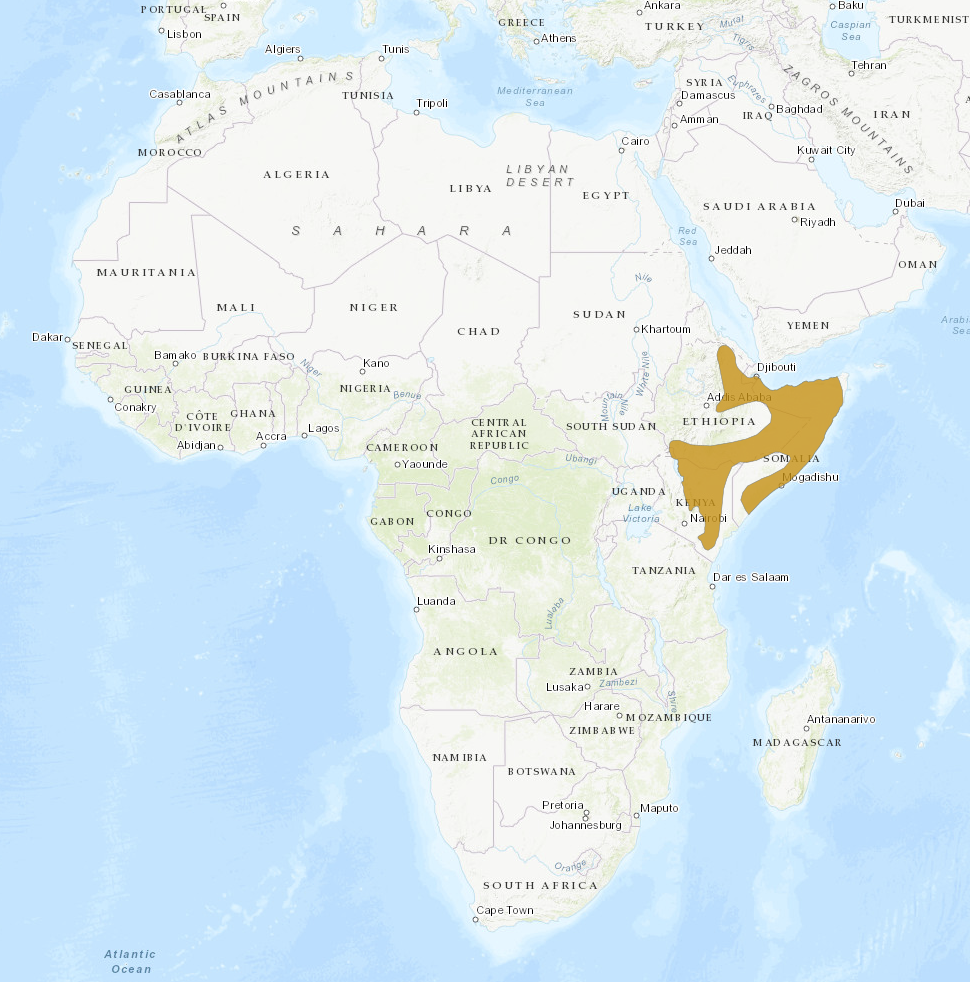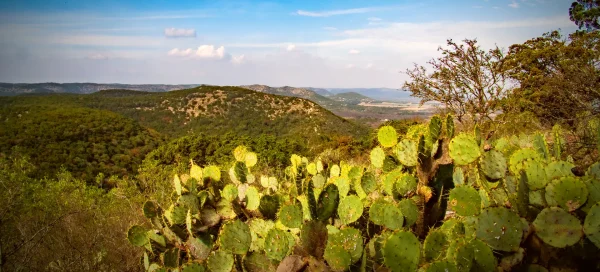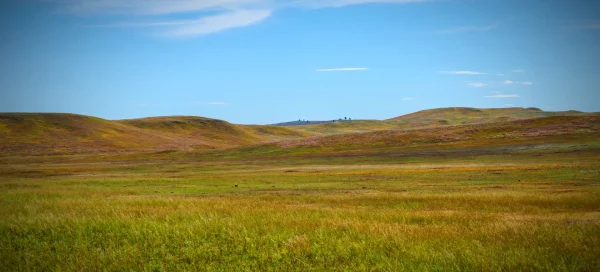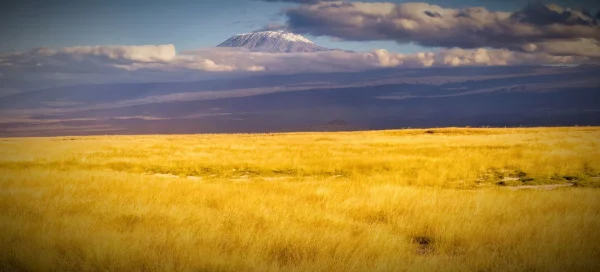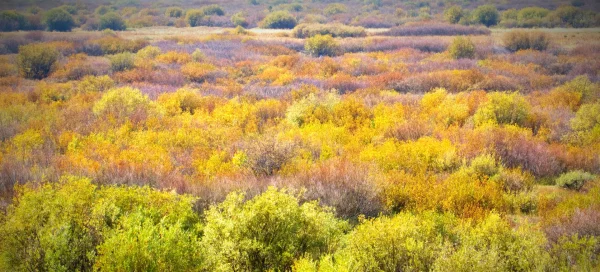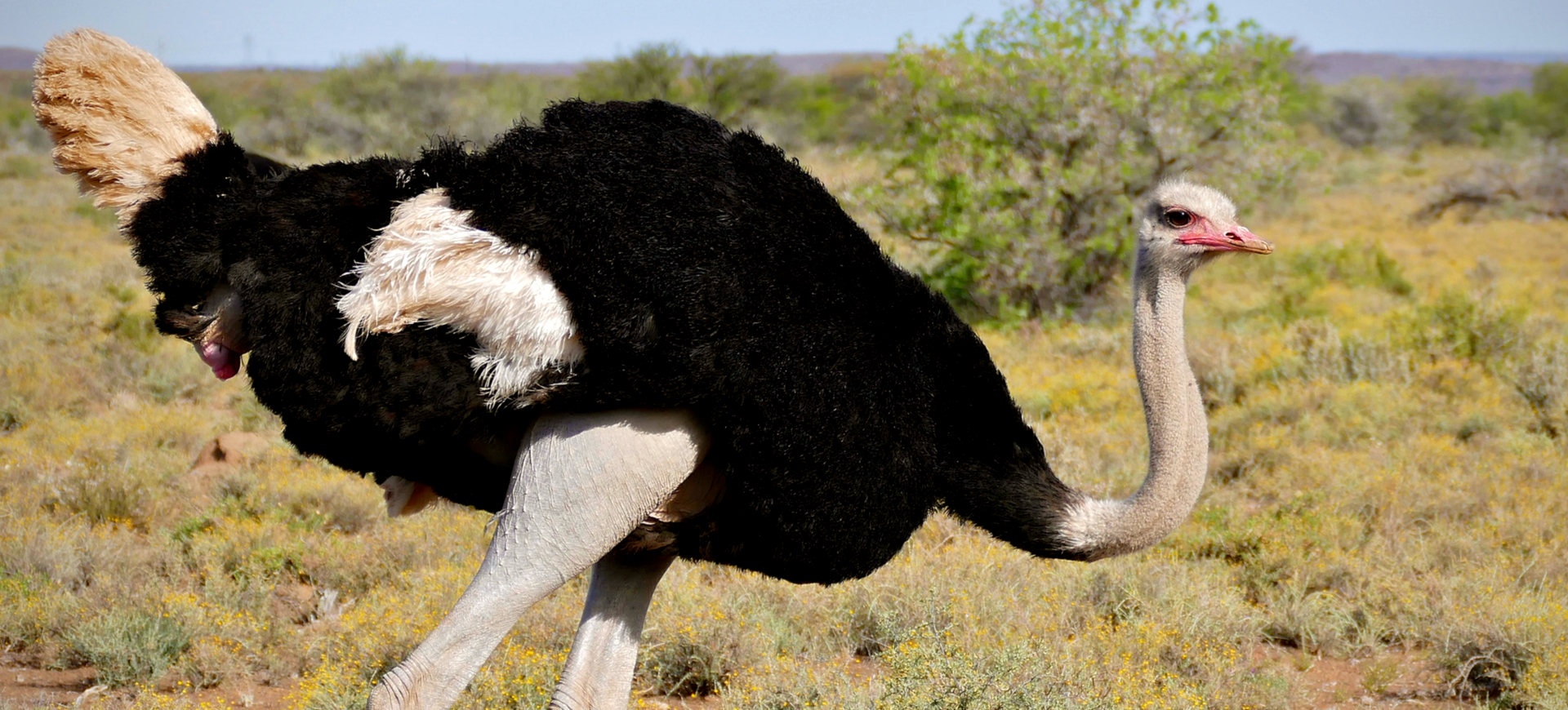Overview
The Somali Ostrich (Struthio molybdophanes) is a large, flightless bird native to the Horn of Africa, distinguished from its relatives by its unique physical characteristics and habitat preferences. Unlike the common ostrich, the Somali Ostrich possesses a distinctive blue-grey neck and thighs, with males showcasing a darker blue coloring during the breeding season to attract females. The species is adapted to arid and semi-arid environments, where it roams savannahs, grasslands, and acacia scrublands in search of food and water.
This ostrich species plays a crucial role in its ecosystem, acting as a seed disperser due to its diet of plants, fruits, and seeds. Despite their large size, Somali Ostriches are exceptional runners, capable of reaching up to 45 miles per hour to escape predators such as lions, cheetahs, and hyenas. They exhibit fascinating behaviors, including elaborate mating dances performed by males and communal nesting practices where females may lay their eggs in a shared nest for increased protection.
The Somali ostrich’s conservation status is of concern due to habitat loss, hunting, and the illegal pet trade. Protecting their habitats and regulating hunting is vital for the species’ survival. Conservation initiatives, including protected areas and community-based conservation projects, aim to address these threats by promoting sustainable practices and raising awareness of the ostrich’s ecological importance.
Taxonomy
Kingdom
Phylum
Class
Order
Family
Genus
Species
Type
RANGE
Current distribution:
The Somali Ostrich's distribution is primarily confined to the Horn of Africa, with the largest populations in Somalia and northeastern Kenya. However, their range has been affected by habitat degradation, hunting, and human encroachment, leading to fragmented populations. Conservation areas and national parks within their range are crucial for their survival, providing protected spaces where they can roam freely.
Efforts to map and monitor Somali Ostrich populations are essential for understanding their current distribution and implementing effective conservation strategies. These efforts help identify critical habitats and the challenges facing these majestic birds, guiding conservation actions to ensure their future.
Physical Description:
The Somali Ostrich is notable for its striking appearance, featuring a long neck and legs that contribute to its height of up to 9 feet, making it one of the tallest birds in the world. Adult males possess unique blue-grey skin on their neck and thighs, which becomes more vibrant during the breeding season, while females and juveniles have a more drab coloration for camouflage. Their body is covered with black feathers (in males) or brownish-grey feathers (in females and juveniles), except for the wings and tail, which have white feathers used in mating displays.
Males are significantly larger and more colorful than females, a dimorphism that plays a crucial role in mating rituals. The bird’s long, powerful legs are built for speed and endurance, enabling quick escapes from predators. Their large eyes provide excellent vision, essential for spotting threats in their open habitat. Despite lacking the ability to fly, their wings are used for balance while running and displayed during courtship rituals.

Lifespan: Wild: ~40 Years || Captivity: ~50 Years

Weight: Male: 198 - 286 lbs (90 - 130 kg) || Female: 150 - 240 lbs (68 - 110 kg)

Height: Male: 79-110 in (201-279 cm) || Female: 67-79 in (170-201 cm)

Wingspan: Male & Female: 75-79 in (191-201 cm)

Top Speed: 45 mph (72 km/h)
Characteristic:
Native Habitat:
The Somali Ostrich is native to the Horn of Africa, specifically in Somalia, northeastern Kenya, and parts of Ethiopia and Djibouti. Their preferred habitats include arid and semi-arid savannahs, grasslands, and acacia scrublands, which provide both the open spaces needed for survival and the vegetation required for their diet. These environments are characterized by extreme temperatures and limited water sources, requiring the Somali Ostrich to be highly adaptable.
The distribution of the Somali Ostrich within its native habitat is influenced by the availability of food and water sources and the presence of predators. Their ability to inhabit these challenging environments highlights their adaptability and the important ecological role they play in maintaining the biodiversity of their ecosystems.
Biomes:
Biogeographical Realms:
Continents:
Diet:
Diet & Feeding Habits:
The Somali Ostrich is an omnivore whose diet includes a variety of plants, fruits, seeds, and occasionally insects and small vertebrates. This varied diet is crucial for their survival in their arid environments, where food sources can be scarce and seasonal. They travel great distances for food, relying on their excellent vision to spot edible plants and strong legs to cover large areas.
Their feeding behavior is adapted to their environment, and they can digest tough plant materials that other animals cannot. They also play a significant role in their ecosystem as seed dispersers, contributing to the health and spread of various plant species. Water intake is another critical aspect of their diet, and they can often be found near waterholes, especially during the dry season.
Mating Behavior:
Mating Description:
The Somali ostrich’s mating system involves complex behaviors, including elaborate dances and displays by the males to attract females. Males establish territories, defend vigorously, display their vibrant blue necks and perform dances to attract mates. The dominant male in a territory may mate with several females, who will lay their eggs in a communal nest dug by the male.
Females take turns laying eggs in the communal nest, which can contain dozens of eggs from multiple females. The dominant male and the primary female then take on the responsibility of incubating the eggs, which lasts about 40 days. This communal nesting strategy increases the chances of egg survival, as the large number of eggs in a single nest makes it more difficult for predators to consume them all.
Reproduction Season:
Birth Type:
Pregnancy Duration:
Female Name:
Male Name:
Baby Name:
Social Structure Description:
Outside the breeding season, Somali Ostriches exhibit gregarious behavior, forming small, loosely associated groups that traverse the Horn of Africa’s expansive savannas and semi-arid landscapes for sustenance. These non-territorial aggregations allow for more efficient foraging, as the eyes of many are better than the eyes of one when spotting predators and finding food sources.
With the onset of the breeding season, the behavior of male Somali Ostriches shifts dramatically as they stake out territories and begin attracting and assembling a harem of females. The males display heightened aggression towards rivals and a more pronounced territorial instinct, defending their chosen nesting ground against any intrusion. This period intensifies social dynamics within the species, as males engage in elaborate courtship displays to woo females and ensure their genetic contribution to the next generation.
Groups:
Conservation Status:
Population Trend:
The decline of the Somali Ostrich population is a growing concern for conservationists and wildlife enthusiasts, driven by habitat loss, hunting, and the illegal pet trade. The expansion of agricultural land, urban development, and deforestation have drastically reduced their natural habitats, leaving these majestic birds with fewer places to roam, breed, and feed. Hunting for their meat, considered a delicacy in some cultures, along with the demand for their distinctive feathers for fashion and decoration, further exacerbates their decline.
Various conservation efforts are being undertaken to protect the Somali Ostrich and its habitat in response to these challenges. Establishing protected areas and national parks offers a refuge where they can live with reduced human interference, providing a more stable environment for feeding, mating, and raising their young. Legal frameworks aimed at regulating hunting and the trade in ostrich products have been established, although issues with enforcement and compliance often hinder the effectiveness of these measures. These initiatives are supported by research and monitoring programs designed to better understand the needs of the Somali Ostrich and the threats they face, informing ongoing and future conservation strategies.
Population Threats:
The Somali Ostrich is increasingly threatened by the rapid expansion of agricultural activities, urbanization, and the unchecked pace of deforestation, eroding the bird’s natural habitats. These disturbances strip away the vegetation that provides essential food and water and fragment the landscapes, isolating ostrich populations and making it harder for them to find mates and reproduce successfully. The relentless pursuit of land for development and agriculture encroaches upon the delicate ecosystems these ostriches call home, diminishing their chances of survival in their traditional ranges.
Furthermore, climate change introduces a profound and possibly insurmountable challenge for the Somali Ostrich, as shifts in climate patterns threaten to alter the ecosystems upon which they rely. Increasing temperatures and changing rainfall patterns can lead to desertification of their habitats, reduce the availability of food sources, and disrupt breeding cycles. These environmental changes compound the issues of habitat destruction and direct exploitation, exacerbating the threats to their survival.
Conservation Efforts:
To combat the myriad threats facing the Somali Ostrich, conservation initiatives have become more targeted and multifaceted, emphasizing the importance of preserving natural habitats by creating and maintaining protected areas and national parks. These sanctuaries offer the Somali Ostrich a refuge from the encroachment of agriculture and urbanization, allowing them spaces to feed, mate, and nest in relative safety from human activities. Furthermore, conservation groups are tirelessly working to bolster legal frameworks that safeguard these birds, advocating for stricter enforcement of hunting regulations and measures against the illegal wildlife trade.
Parallel to these efforts, there’s a growing emphasis on community engagement and education to ensure the long-term success of conservation strategies. By involving local communities in the stewardship of their natural resources, conservationists hope to foster a sense of ownership and responsibility towards the Somali Ostrich and their habitat. Educational outreach programs target both the younger generation and adults, highlighting the ecological importance of the Ostrich and the broader benefits of biodiversity conservation. These programs seek to change perceptions and behaviors towards wildlife, promoting coexistence and support for conservation initiatives.
Additional Resources:
Fun Facts
- Unlike the Common Ostrich, the Somali Ostrich has a distinct blue-grey neck and thigh skin in males.
- They can survive without water for several days, getting most of their water from the plants they eat.
- Despite being flightless, Somali Ostriches can run up to 35 mph.
- The Somali Ostrich is among the largest bird species in the world.
- Males turn a brighter blue during the mating season.
- Unlike most birds, ostriches have only two toes on each foot.
- The eggs of the Somali Ostrich are among the largest bird eggs in the world, but they are smaller than those of the Common Ostrich.
- Their keen eyesight and impressive speed help them evade predators in their open habitats.
- Ostriches cannot move backward easily, reflecting their evolutionary adaptation for forward speed.
- An ostrich’s kick can be dangerous, or even fatal, to predators.

